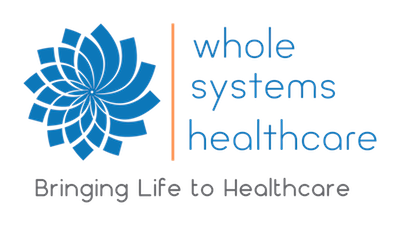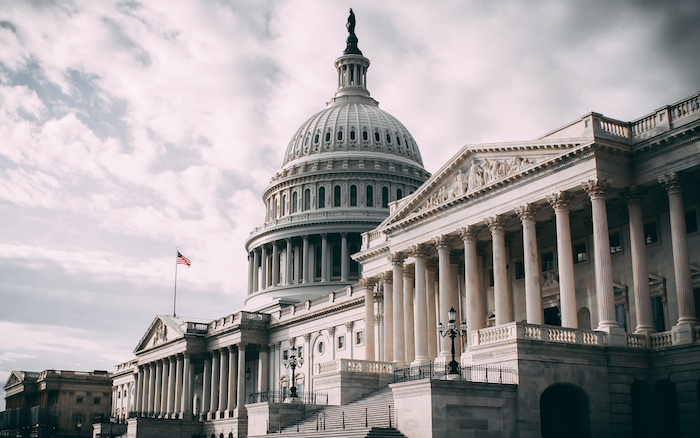In 2015, there were 52,404 drug overdose deaths in the United States, 63.1% of which involved opioids. Prescriptions are involved in 50% of opioid-related deaths as well as an estimated 2 million diagnoses of opioid use disorder. In total, the opioid epidemic generates a $78.5 billion burden on the United States healthcare system. Rural counties continue an upward trend in opioid prescribing despite a pattern of more conservative treatment policies and guidelines emerging from federal agencies, state governments, and professional associations.
In August 2017, the President’s Commission on Combating Drug Addiction and the Opioid Crisis issued a preliminary report urging the president to declare a national emergency under either the Public Health Service Act or the Stafford Act. In October 2017, the Trump administration declared the emergency, allowing the administration to waive some federal rules and put pressure on Congress to provide more funding, and the final Commission report was published the following month. While the report focuses on conventional pharmaceutical approaches for treating pain, such as developing novel medication-assisted treatments, making Naloxone more readily-available, and upping efforts to address illicit use of fentanyl and fentanyl-analogues, it also calls for development of non-opioid pain relievers. The report made only minimal reference to integrative approaches such as acupuncture and chiropractic, but, in a meaningful step toward holism, offered strong support of increasing access mental health services. Despite emerging evidence supporting the efficacy of integrative approaches, pain management and treatment guidelines with regard to integrative medicine remain vague and inconsistent across federal agencies within the Department of Health and Human Services, such as the CDC, FDA, and NIH.
The “Non-Pharmacological” Movement
The general consensus is that reducing opioid prescriptions is a viable approach for helping address the opioid crisis in the United States.1-4 Opioid prescribing rates are closely linked to addiction and overdose rates, as prescription opioids have been implicated in about half of the nation’s 33,000 opioid-related overdose deaths in 2015. Opioid prescribing peaked in 2010 and has decreased on an annual basis through 2015, but the overall rate of prescribing in 2015 remains roughly three times higher than in 2009.4 The CDC recently sorted American counties by the amount of morphine-milligram equivalents (MMEs) prescribed per person to standardize for the variety of opioid types and doses.4 In 2015, counties with 25% of MMEs prescribed six times more opioid pain medication than counties in the lowest quartile.4 Upper quartile counties tended to be rural with higher rates of Medicaid enrollment, lower education attainment, higher rates of unemployment, and consisted of mainly of non-Hispanic white, low-income individuals in relatively poor health.1,4
The CDC concludes, “The substantial variation in opioid prescribing observed at the county-level suggests inconsistent practice patterns and a lack of consensus about appropriate opioid use and demonstrates the need for better application of guidance and standards around opioid prescribing practices.”5 The report goes on to offer the CDC’s Guidelines for Prescribing Opioids for Chronic Pain for “evidence-based recommendations for opioid prescriptions”.5 The guidelines recommend the use of non-opioid therapies as a first line of treatment, such as acetaminophen, non-steroidal anti-inflammatory medications, exercise therapy, and cognitive behavioral therapy for chronic pain.4,12 Data from the report can be used by public health officials to target programs at counties with higher opioid prescribing practices and work toward increasing access to addiction services.
Toward an Integrative Model
Authorities are currently evolving pain treatment standards and guidelines in response to the opioid crisis. In February 2017, The American College of Physicians (ACP) released new guidelines for the treatment of low back pain based on a review of more than 150 studies.15 They concluded that medications tend to have only temporary to modest benefits in the treatment of low back pain. For example, a systematic review and meta-analysis published in 2017 determined that NSAIDs show no clinically important outcomes between intervention and placebo in the treatment of spinal pain. To address the incongruence between the current literature and pain treatment standards, the ACP’s new recommendations include evidence-based pain therapies beyond the previously recommended medication-only guidelines to include heat, massage, acupuncture, and spinal manipulation (as with chiropractic care) for new low back pain lasting less than two weeks.7 NSAIDs are recommended as a second line of treatment after exhausting all nonpharmacologic therapies. For chronic low back pain lasting more than 12-weeks, they recommend exercise (including stretching, improving balance, and strengthening core muscles), physical therapy, acupuncture, and mindfulness-based programs intended to cope with or reduce stress. Other approaches included tai chi, yoga, and relaxation techniques. Under these guidelines, opioids should only be used if all other measures have failed and after a thorough review of risks and benefits with the prescribing physician.15
In May 2017, the FDA released proposed changes to its blueprint for teaching health care providers about treating pain.16 Section 2, Part 2, under Creating the Pain Treatment Plan, the blueprint urges “nonpharmacologic therapies”, including psychological, physical rehabilitative, surgical approaches, and complementary therapies, specifically naming acupuncture and chiropractic. The guideline goes on to state, “HCPs should be knowledgeable about the range of available therapies, when they may be helpful, and when they should be used as part of a multidisciplinary approach to pain management.”16
Barriers to Change
There are several barriers to creating access to nonpharmacologic treatment options for pain in order to accommodate needed reductions in opioid prescriptions, including disparities in health care access for pain treatment, a lack of consensus in opiate prescribing standards in a climate of universal policy transition, industry pressures, inter-profession political battles, limited access to emerging recommended nonpharmacologic pain treatment options, and limited insurance coverage for said treatments. While there is a substantive body of literature supporting the efficacy of complementary and integrative medicine (CIM) for treating pain, there is no shortage of contention regarding CIM use in the United States, largely due to inter-profession turf battles and the fact that complementary and integrative research is in early stages. However, as the research is showing, lacking consensus on mechanism of action does not mean the treatment is ineffective, but from a liability perspective, it does make it difficult to evaluate whether or not a treatment is safe and when it is most appropriately used. Regardless, it has become evident that non-invasive, non-pharmacologic pain therapies are generally safe and effective for the treatment of chronic pain, safer and in some cases more effective than pharmaceuticals and/or surgery.
Although this new direction is promising, much groundwork is still needed to implement new policies, starting with modernizing federal standards to reflect the current literature while educating clinicians about the value of integrative non-pharmacologic pain treatment options. Doing so may provide leverage for expanding needed insurance coverage for non-pharmacologic treatment approaches, as noted by President Trump’s Opioid Commission when discussing reimbursement for non-opioid treatment options:8
Although in some conditions, behavioral programs, acupuncture, chiropractic, surgery, as well as FDA-approved multimodal pain strategies have been proven to reduce the use of opioids, while providing effective pain management, current CMS reimbursement policies, as well as health insurance providers and other payers, create barriers to the adoption of these strategies.
Also worth noting is the recent collaboration between the Clinton Foundation and Johns Hopkins Bloomberg School of Public Health, who updated their recommendations to address the opioid epidemic in an October 2017 action plan, “The Opioid Epidemic: From Evidence to Impact”. Like the Trump Commission’s report, one section makes mention of non-pharmacologic and integrative treatments, while effectively ignoring these approaches in the rest of the rest of the 59-page document and eight other sections.8,27 The report offers 48 recommendations in nine areas of focus, endorsed by a list of 28 signatories, none of whom are recognizable leaders in the integrative medicine community. However, the report does explicitly state, “there are also many non-pharmacologic therapies that can be used for the management of pain, including physical therapy, therapeutic massage, acupuncture, biofeedback, yoga, and heat or cold therapies,” citing the CDC’s drafted 2016 Guidelines for Prescribing Opioids for Chronic Pain. Interestingly, the CDC’s guidelines, while also urging non-pharmacologic approaches, were mysteriously scrubbed of references to acupuncture, massage, and chiropractic when edited from the draft to final version.4,27 For example, page 17 of the original draft version included specific mention of integrative approaches that were not included in the final version:29
Based on contextual evidence, many nonpharmacologic therapies, including physical therapy, weight loss for knee osteoarthritis, complementary and alternative therapies (e.g., manipulation, massage, and acupuncture), psychological therapies such as CBT, and certain interventional procedures can ameliorate chronic pain…Despite this, these therapies are not always or fully covered by insurance, and cost can be a barrier for patients.
More generally, several systemic factors have constrained progress in treatment approaches oriented toward prevention and healing of chronic diseases: (1) underestimation of the effectiveness of worthwhile interventions, (2) the belief that there is a long delay in achieving measurable impact, (3) commercial pressures, (4) parochial conflicts of interest, (5) institutional inertia, (6) cultural beliefs and practices affecting attitude and lifestyle, (7) misallocation of resources, (8) socioeconomic and political factors limiting access to multidisciplinary integrative care, and (9) monopolization of perspectives on medicine and health by the predominant biomedical model.21-30 Studies on holistic approaches are generally based on relatively small population sizes compared to more profitable and well-funded research areas such as pharmaceutical medicine. Thus, companies are less likely to pay for the needed studies, while government agencies tend to view these studies as too costly and complicated to underwrite, creating financial obstacles to producing “ironclad evidence” based on large population sizes.31,32 Moreover, despite increased CIM research in recent years, our current healthcare system lacks a coherent and rigorous conceptual framework for integrative medicine that is capable of accommodating medical and healing systems outside the biomedical model, making it difficult for authorities to find consensus around CIM treatment guidelines.
The Road Ahead
Primary factors to consider in the effort to address the opioid addiction crisis and continue to reduce dependence on opioid prescriptions for the management of chronic pain include: (1) a lack of consensus on appropriate opioid prescribing practices as guidelines and standards from authorities are being revised universally; 6,7 (2) patients and physicians alike may rely excessively on opioids for managing pain due in part to limited access to non-pharmacologic pain treatment;1,4 (3) public and private insurance coverage for non-pharmacologic pain treatment is very limited and varies significantly by state; (5) continued focus on increasing access to mental health services in areas of need; and (4) rural communities that are disproportionately affected by all of the above, including differences in opioid prescribing practices between urban and rural areas.1,4 Approaching these priority areas would be made easier by updating outdated and inconsistent pain management and treatment standards by federal authorities, which would provide the foundation needed to advocate for policies that increase access to comprehensive pain and addiction treatment options, such as expanded federal, state, and private insurance coverage, as well as support licensing, scope fulfillment, and health system integration efforts for healthcare providers specializing in non-pharmacologic pain treatment options.
An effective method for updating federal standards would involve a collaborative effort among federal authorities to develop a consensus with a strong message that can be used for state and federal policy efforts. Federal standards should reflect the changes needed in state licensing of qualified healthcare providers specializing in non-pharmacologic and integrative approaches to addiction and pain treatment as well as corresponding public and private insurance coverage for these providers. A strong supportive message on the part of the Trump administration could help motivate and streamline multiscale, inter-professional, intersectoral efforts. A thorough assessment of cost-benefit outcomes for expanded or increased treatment options is needed, as increasing and/or expanding coverage to non-pharmacologic pain management and treatment options would remove significant access barriers. Currently, most public health insurance plans provide very limited coverage for non-pharmacologic pain management and treatment options.8,27
The President’s decision to declare the opioid crisis an emergency will provide states with some latitude in implementing needed policies. Hopefully, more states will follow the leadership of Oregon, Maine, Vermont, Ohio, Rhode Island, and elsewhere in opening access to acupuncture and other integrative treatments.11 While the level of engagement with integrative medicine among Trump supporters is unknown, the value of integrative medicine as a potential solution for the opioid crisis prompts serious consideration.11 It is important to note that constituency members from rural communities are disproportionately affected by the crisis.1
The current political climate and national emergency status lends an important opportunity to increase or expand state and national programs. One option for improving public insurance coverage is to increase coverage for existing non-opiate treatment options and mental health services currently covered by most public health insurance programs (Medicare and Medicaid), such as non-opiate pharmacologic pain relievers, physical therapy, and counseling (increased coverage). However, chronic pain is a complex condition with many contributing factors that vary depending on the individual. A viable patient-centered approach would allow patients to choose non-pharmacologic chronic pain treatments and mental health services they find most effective, instead of limiting coverage to, for example, physical and occupational therapists (expanded coverage). This option expands coverage for proven non-pharmacologic treatment options and progressive mental health services not currently covered by most public health insurance programs, including mindfulness-based stress reduction (MBSR), yoga, tai chi, biofeedback, acupuncture, naturopathy, chiropractic, nutrition therapy, psychotherapy, and therapeutic massage. Medical cannabis also shows promise as an effective treatment of both cancer and non-cancer related chronic pain, but its safety remains controversial in the literature due to its effect as a strong central nervous system depressant and potential for abuse. Cannabis is still classified as a Schedule I drug by the federal government, claiming high potential for abuse and therefore not acceptable for medical use. However, this argument is less valid when compared to opioid dependency and abuse.
Final Thoughts: A Whole Systems Approach
Advances in modern medical knowledge and technology have significantly improved our ability save lives from immediate health threats. However, 90% of our healthcare dollars, $3.3 trillion, are spent on managing chronic disease, while chronic disease accounts for the majority of deaths in the United States and worldwide. The United States healthcare system, while having mastered saving lives and managing symptoms, continues to overlook the “other half” of health care – health restoration, disease prevention, and wellness promotion. This same mentality underlies the over-reliance on opioid prescriptions for chronic pain, where instead of focusing on a restorative approach to address underlying causative factors, the tendency is to manage symptoms much like would be done in an acute care setting. This is partly due to a lack of understanding and consensus around medical and healing systems oriented toward restoring and promoting health.
Generally speaking, the term whole systems references a style of holistic healthcare modeling of systems in relation to the human being. A whole systems approach places reductionist and systems-based treatment methods on a continuum from acute problems to complete health, while providing multiscale context for the systems with which the person interacts in their treatment process and everyday lives. The whole systems approach begins with assessing where the person fits on the health–dysfunction–disease continuum. A reductionist approach is used to manage acute, life-threating or seemingly isolated issues. Once resolved, and relative stability has been established, a systems-based approach is used to help ensure lasting symptom resolution within a comprehensive healing process guided by collaborating clinicians. Such an approach provides a useful tool for systematically modeling multiple perspectives and roles involved in large-scale integrative healthcare model, and may have worthwhile applications in research, education, and policymaking.44
References
1. Guy, G. P. (2017). Vital signs: changes in opioid prescribing in the United States, 2006–2015. MMWR. Morbidity and Mortality Weekly Report, 66.
2. Rudd, Rose A. “Increases in drug and opioid-involved overdose deaths—United States, 2010–2015.” MMWR. Morbidity and mortality weekly report 65 (2016).
3. Florence, C. S., Zhou, C., Luo, F., & Xu, L. (2016). The economic burden of prescription opioid overdose, abuse, and dependence in the United States, 2013. Medical care, 54(10), 901-906.
4. Dowell, Deborah, Tamara M. Haegerich, and Roger Chou. “CDC guideline for prescribing opioids for chronic pain—United States, 2016.” Jama 315.15 (2016): 1624-1645.
5. National Institutes of Health. (March, 2014). Chronic Low-Back Pain and Complementary Health Approaches: What the Science Says. Accessed at https://nccih.nih.gov/health/providers/digest/chronic-low-back-pain-science.
6. Qaseem, A., Wilt, T. J., McLean, R. M., & Forciea, M. A. (2017). Noninvasive Treatments for Acute, Subacute, and Chronic Low Back Pain: A Clinical Practice Guideline From the American College of PhysiciansNoninvasive Treatments for Acute, Subacute, and Chronic Low Back Pain. Annals of internal medicine, 166(7), 514-530.
7. National Institutes of Health. (March, 2014). Chronic Low-Back Pain and Complementary Health Approaches: What the Science Says. Accessed at https://nccih.nih.gov/health/providers/digest/chronic-low-back-pain-science
8. Christie, G. C., Baker, C. G. C., Cooper, G. R., Kennedy, C. P. J., Madras, B., & Bondi, F. A. G. P. THE PRESIDENT’S COMMISSION ON COMBATING DRUG ADDICTION AND THE OPIOID CRISIS.
9. Christie, G. C., Baker, C. G. C., Cooper, G. R., Kennedy, C. P. J., Madras, B., & Bondi, F. A. G. P. THE PRESIDENT’S COMMISSION ON COMBATING DRUG ADDICTION AND THE OPIOID CRISIS.
10. Johnson, J. Wagner, J. (August 2017) Trump holds off on declaring opioid crisis a national emergency. The Washington Post. Accessed at: https://www.washingtonpost.com/politics/trump-to-hold-major-briefing-on-opiod-crisis/2017/08/08/8b7cd146-7c2f-11e7-9d08-b79f191668ed_story.html.
11. Weeks, J. (August 2017) President’s opioid commission report a nod to integrative care. Integrative Practitioner. Accessed at: https://www.integrativepractitioner.com/whats-new/all-news/presidents-opioid-commission-report-nod-integrative-care/.
12. Guy, G. P. (2017). Vital signs: changes in opioid prescribing in the United States, 2006–2015. MMWR. Morbidity and Mortality Weekly Report, 66.
13. Bohnert, A. S., Valenstein, M., Bair, M. J., Ganoczy, D., McCarthy, J. F., Ilgen, M. A., & Blow, F. C. (2011). Association between opioid prescribing patterns and opioid overdose-related deaths. Jama, 305(13), 1315-1321.
14. National Institutes of Health. (March, 2014). Chronic Low-Back Pain and Complementary Health Approaches: What the Science Says. Accessed at https://nccih.nih.gov/health/providers/digest/chronic-low-back-pain-science.
15. Qaseem, A., Wilt, T. J., McLean, R. M., & Forciea, M. A. (2017). Noninvasive Treatments for Acute, Subacute, and Chronic Low Back Pain: A Clinical Practice Guideline From the American College of PhysiciansNoninvasive Treatments for Acute, Subacute, and Chronic Low Back Pain. Annals of internal medicine, 166(7), 514-530.
16. Food and Drug Administration. (May2017). FDA Education Blueprint for Health Care Providers Involved in the Management or Support of Patients with Pain. Accessed at: https://www.fda.gov/downloads/Drugs/NewsEvents/UCM557071.pdf.
17. Machado, G. C., Maher, C. G., Ferreira, P. H., Day, R. O., Pinheiro, M. B., & Ferreira, M. L. (2017). Non-steroidal anti-inflammatory drugs for spinal pain: a systematic review and meta-analysis. Annals of the Rheumatic Diseases, 76(7), 1269-1278.
18. National Institutes of Health. (March, 2014). Chronic Low-Back Pain and Complementary Health Approaches: What the Science Says. Accessed at https://nccih.nih.gov/health/providers/digest/chronic-low-back-pain-science.
19. Chen, L., & Michalsen, A. (2017). Management of chronic pain using complementary and integrative medicine. BMJ, 357, j1284.
20. Gorski, D. H., & Novella, S. P. (2014). Clinical trials of integrative medicine: testing whether magic works?. Trends in molecular medicine, 20(9), 473-476.
21. Verhoef, M. J., Lewith, G., Ritenbaugh, C., Boon, H., Fleishman, S., & Leis, A. (2005). Complementary and alternative medicine whole systems research: beyond identification of inadequacies of the RCT. Complementary therapies in medicine, 13(3), 206-212.
22. Weiger, W. A., Smith, M., Boon, H., Richardson, M. A., Kaptchuk, T. J., & Eisenberg, D. M. (2002). Advising patients who seek complementary and alternative medical therapies for cancer. Annals of internal medicine, 137(11), 889-903.
23. Chang, A. K., Bijur, P. E., Esses, D., Barnaby, D. P., & Baer, J. (2017). Effect of a Single Dose of Oral Opioid and Nonopioid Analgesics on Acute Extremity Pain in the Emergency Department: A Randomized Clinical Trial. Jama, 318(17), 1661-1667.
24. Brox, J. I., Nygaard, Ø. P., Holm, I., Keller, A., Ingebrigtsen, T., & Reikerås, O. (2010). Four-year follow-up of surgical versus non-surgical therapy for chronic low back pain. Annals of the rheumatic diseases, annrheumdis108902.
25. Beard, D. J., Rees, J. L., Cook, J. A., Rombach, I., Cooper, C., Merritt, N., … & Moser, J. (2017). Arthroscopic subacromial decompression for subacromial shoulder pain (CSAW): a multicentre, pragmatic, parallel group, placebo-controlled, three-group, randomised surgical trial. The Lancet.
26. Grissa, M. H., Baccouche, H., Boubaker, H., Beltaief, K., Bzeouich, N., Fredj, N., … & Nouira, S. (2016). Acupuncture vs intravenous morphine in the management of acute pain in the ED. The American journal of emergency medicine, 34(11), 2112-2116.
27. The Opioid Epidemic: From Evidence to Impact. Prepared by Johns Hopkins Bloomberg School of Public Health and the Clinton Foundation. 2017. Accessed at: https://www.issup.net/files/2017-10/The%20Opioid%20Epidemic%20from%20evidence%20to%20impact%202017%20JohnsHopkins.pdf
28. Weeks, J. (November 2017). Did the Hopkins-Clinton Foundation “Opioid Epidemic” report include integrative approaches? Integrative Practitioner. Accessed at: https://www.integrativepractitioner.com/whats-new/hopkins-clinton-foundation-opioid-epidemic-report-include-integrative-approaches/.
29. Dowell, Deborah, Tamara M. Haegerich, and Roger Chou. “Draft CDC guideline for prescribing opioids for chronic pain—United States, 2016.” Accessed at: http://www.massmed.org/Advocacy/Key-Issues/Opioid-Abuse/CDC-Draft-Opioid-Prescribing-Guidelines-for-Chronic-Pain—Dec-2015-(pdf)/.
30. Chao MT, Wade CM. Socioeconomic factors and women’s use of complementary and alternative medicine in four racial/ethnic groups. Ethnicity & disease. 2008;18(1):65.
31. Wardle J. More integrative research is needed: But where will it come from?. Advances in Integrative Medicine. 2016 Apr 1;3(1):1-2.
32. Moynihan R, Bero L. Toward a Healthier Patient Voice: More Independence, Less Industry Funding. JAMA internal medicine. 2017 Mar 1;177(3):350-1.
33. NIH: National Center for Complimentary and Integrative Health. (Last modified on November, 2015) Complementary and Alternative Medicine Funding by NIH Institute/Center. Accessed at https://nccih.nih.gov/about/budget/institute-center.htm.
34. Hsiao, A. F., Ryan, G. W., Hays, R. D., Coulter, I. D., Andersen, R. M., & Wenger, N. S. (2006). Variations in provider conceptions of integrative medicine. Social Science & Medicine, 62(12), 2973-2987.
35. NIH: National Center for Complimentary and Integrative Health. (Last modified on November, 2015) Complementary and Alternative Medicine Funding by NIH Institute/Center. Accessed at https://nccih.nih.gov/about/budget/institute-center.htm.
36. Hsiao, A. F., Ryan, G. W., Hays, R. D., Coulter, I. D., Andersen, R. M., & Wenger, N. S. (2006). Variations in provider conceptions of integrative medicine. Social Science & Medicine, 62(12), 2973-2987.
37. Qaseem, A., Wilt, T. J., McLean, R. M., & Forciea, M. A. (2017). Noninvasive Treatments for Acute, Subacute, and Chronic Low Back Pain: A Clinical Practice Guideline From the American College of PhysiciansNoninvasive Treatments for Acute, Subacute, and Chronic Low Back Pain. Annals of internal medicine, 166(7), 514-530.
38. Coghill, Robert C. “Individual differences in the subjective experience of pain: new insights into mechanisms and models.” Headache: The Journal of Head and Face Pain 50.9 (2010): 1531-1535.
39. Campbell, F. A., Tramèr, M. R., Carroll, D., Reynolds, D. J. M., Moore, R. A., & McQuay, H. J. (2001). Are cannabinoids an effective and safe treatment option in the management of pain? A qualitative systematic review. Bmj, 323(7303), 13.
40. Lynch, M. E., & Campbell, F. (2011). Cannabinoids for treatment of chronic non‐cancer pain; a systematic review of randomized trials. British journal of clinical pharmacology, 72(5), 735-744.
41. Cerdá, M., Wall, M., Keyes, K. M., Galea, S., & Hasin, D. (2012). Medical marijuana laws in 50 states: investigating the relationship between state legalization of medical marijuana and marijuana use, abuse and dependence. Drug and alcohol dependence, 120(1), 22-27.
42. Lucas, P. (2012). Cannabis as an adjunct to or substitute for opiates in the treatment of chronic pain. Journal of psychoactive drugs, 44(2), 125-133.
43. CDC. National Center for Chronic Disease Prevention and Health Promotion (NCCDPHP). Accessed at: https://www.cdc.gov/chronicdisease/about/costs/index.htm.
44. Mehrmann CS, Schuff BM, Hedayat KM, Stargrove, MB. A whole systems healthcare model to address multiscale health issues. [In press. 2019]



